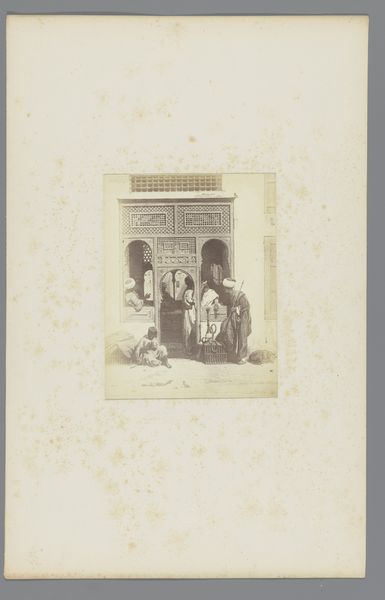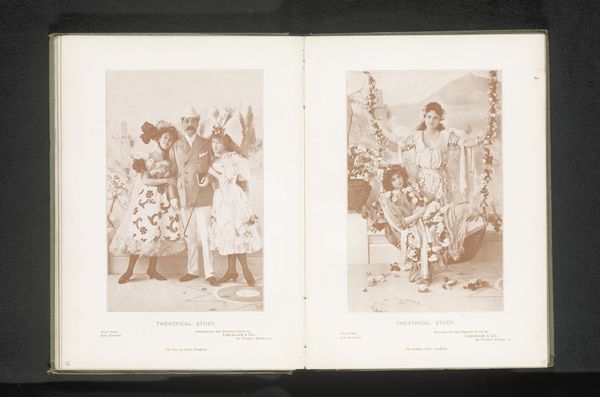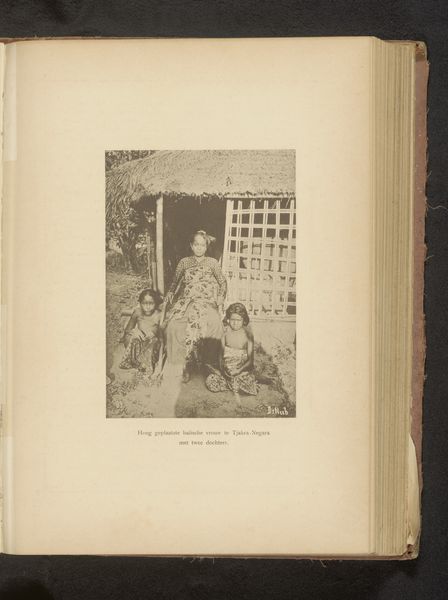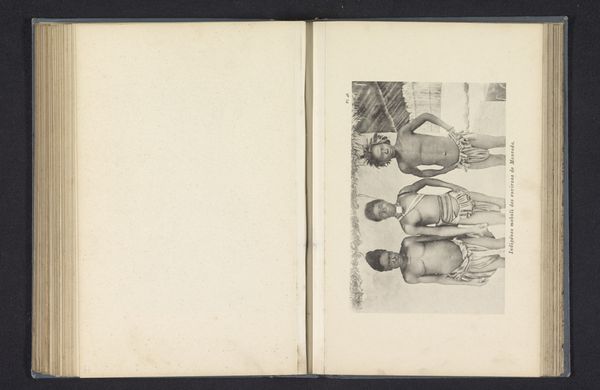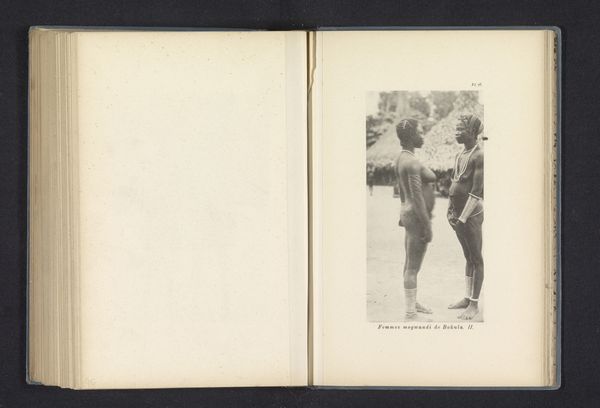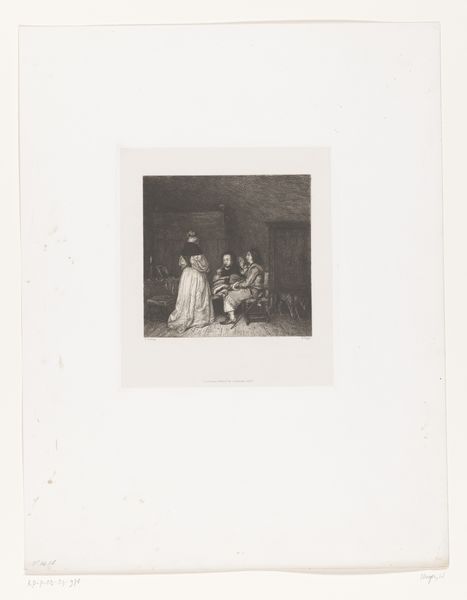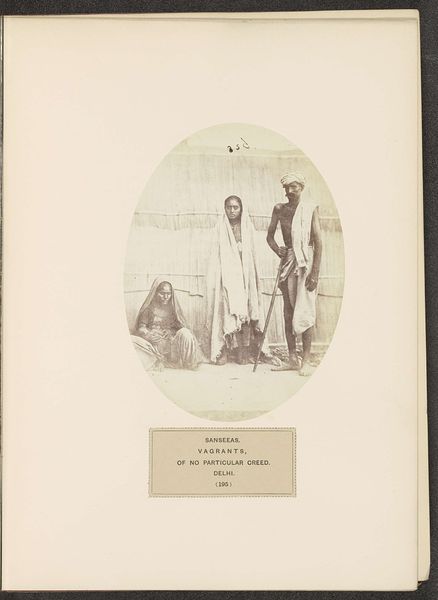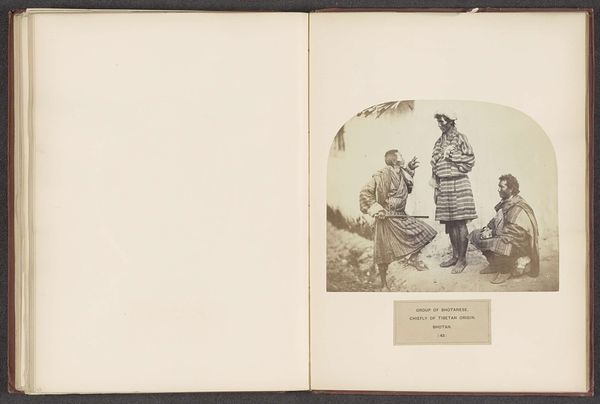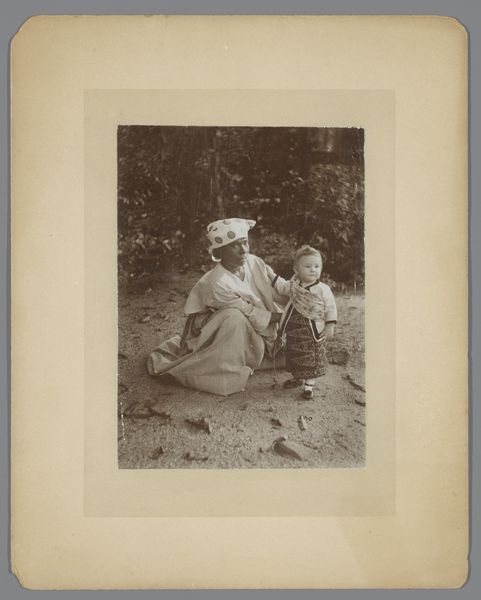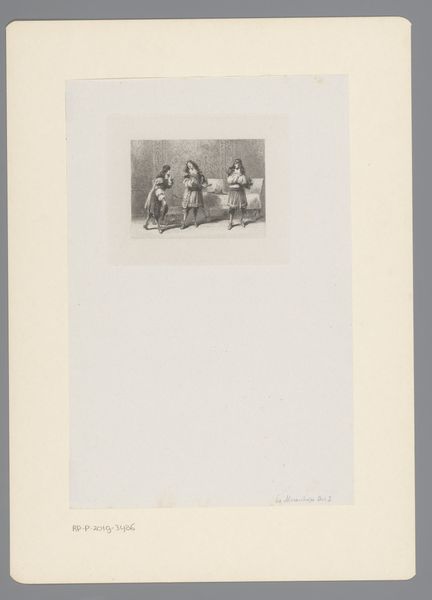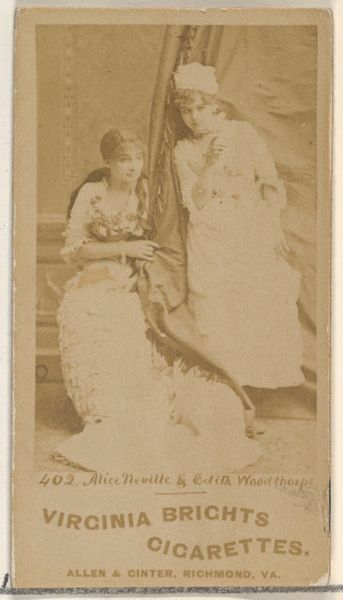![[Ceylonese Group by a Tree] by Julia Margaret Cameron](/_next/image?url=https%3A%2F%2Fd2w8kbdekdi1gv.cloudfront.net%2FeyJidWNrZXQiOiAiYXJ0ZXJhLWltYWdlcy1idWNrZXQiLCAia2V5IjogImFydHdvcmtzL2JlZjM2YWQ2LTdhNmItNGEyMy1iODExLTRhNTI5NDkxMDc2OS9iZWYzNmFkNi03YTZiLTRhMjMtYjgxMS00YTUyOTQ5MTA3NjlfZnVsbC5qcGciLCAiZWRpdHMiOiB7InJlc2l6ZSI6IHsid2lkdGgiOiAxOTIwLCAiaGVpZ2h0IjogMTkyMCwgImZpdCI6ICJpbnNpZGUifX19&w=3840&q=75)
photography, albumen-print
#
portrait
#
photography
#
orientalism
#
genre-painting
#
albumen-print
Dimensions: 27 x 19.9 cm (10 5/8 x 7 13/16 in.)
Copyright: Public Domain
Editor: We're looking at "[Ceylonese Group by a Tree]", an albumen print from 1878 by Julia Margaret Cameron, currently held at the Metropolitan Museum of Art. The photograph features three individuals in what appears to be a staged setting. The overall mood feels… slightly unsettling to me, a little artificial, and there is an uncomfortable power dynamic in this gaze. What do you see in this piece? Curator: What strikes me is how this image participates in the visual language of colonialism. Cameron, as a British photographer in Ceylon (now Sri Lanka), was undoubtedly influenced by and contributed to the orientalist gaze. The "genre painting" aspect you identified, combined with its "portrait" style, positions these individuals not as subjects with their own stories, but as types—examples of the exotic "other" for a Western audience. Editor: So, you are saying it perpetuates stereotypes rather than portraying individuals? Curator: Precisely. Consider the title: "Ceylonese Group." It essentializes an entire population. The arrangement, the lighting, and even the soft focus – it all contributes to a narrative constructed by Cameron. A narrative not necessarily rooted in the reality of these people's lives. How might contemporary photography engage with similar subjects but challenge, rather than reinforce, such colonial perspectives? Editor: I see what you mean. By calling it a "Ceylonese Group," it groups them all together, like one identity. Contemporary photographers should maybe include each person's personal background or specific stories instead of making it so generalized. Curator: Exactly! Paying attention to individual narratives, addressing the power dynamics inherent in the act of photographing someone, is crucial. It's about shifting the gaze, recentering the subjects, and allowing them to tell their own stories. Editor: Thanks for making it so much clearer to me how an image can be a reflection of something bigger. Curator: Indeed! Recognizing that art doesn’t exist in a vacuum but rather in intricate networks of social and historical relations is key to any deep analysis.
Comments
No comments
Be the first to comment and join the conversation on the ultimate creative platform.
